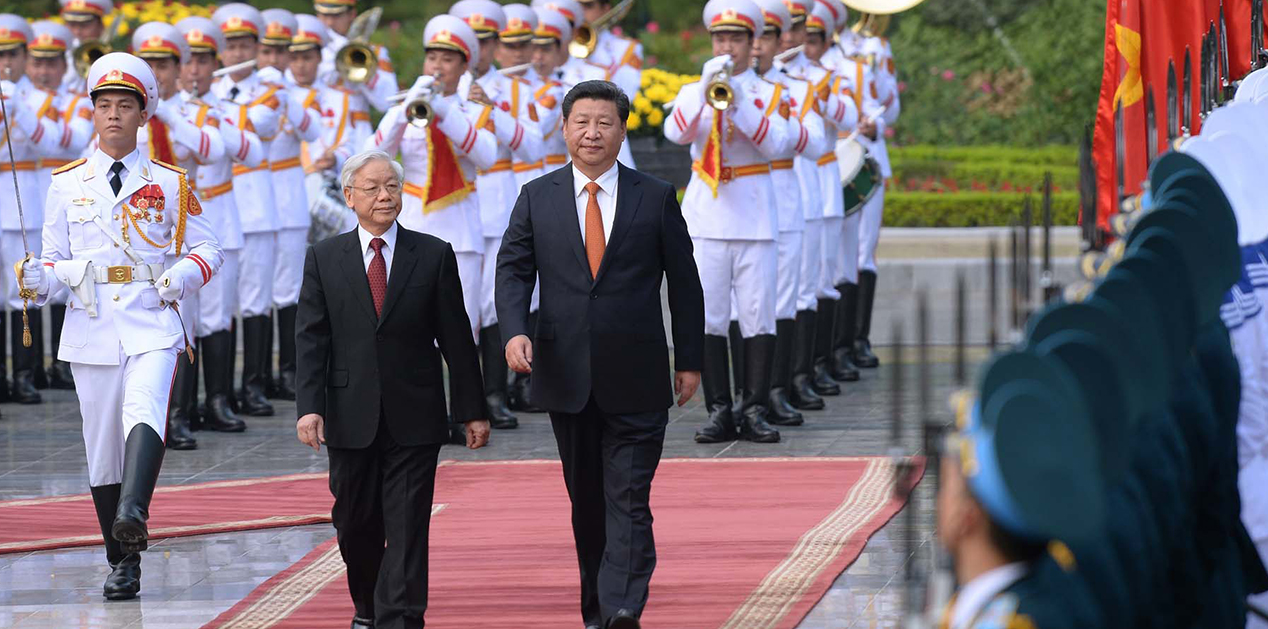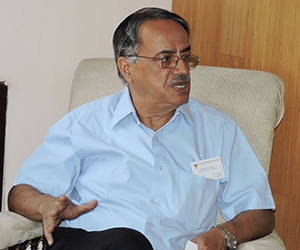Nearly 14 years after it signed the ‘Declaration on the Conduct of Parties in the South China Sea’ (DOC) with ASEAN countries--it also signed in October 2003--the Treaty of Amity and Cooperation in Southeast Asia -- China’s approach to the South China Sea issue has become increasingly pro-active and assertive.
Around 2005 China had also promoted the idea of joint development of the underwater resources with the other countries such as Vietnam and Philippines. In fact, it also signed an agreement to undertake joint seismic surveys in the South China Sea.
However, in recent years, given the double digit growth in its defence budgets, rapid modernization of PLA and with new leadership at the helm of affairs in China the situation in the South China Sea has become very challenging for not only for Vietnam but also for the other stakeholders. Hanoi on its part has been pursuing very balanced and sophisticated foreign and security policies to secure its interests.
During the Communist Party of Vietnam’s (CPV) 12th National Congress in January this year Mr. Nguyen Phu Trong was re-elected as the Secretary General of the Party. Seen as ideologically aligned with China he has been very careful to maintain a fine balance between Vietnam’s outreach to the United States and evolving relationship with China.
Last year in July Secretary General Nguyen Phu Trong became the first top communist Party leader to visit the US which reflected the strengthening of relationship between the US and Vietnam despite the differing nature of political system in both the countries. However, earlier in April last year he had also visited Beijing to mend the downward spiral in relations due to the South China Sea issues.
China’s muscle flexing and militarization of the South China has also moved the Vietnamese leadership to seek support through multilateral organizations like ASEAN and by enhancing its bilateral relationship with countries in the region as also those outside the region. Besides the US, Vietnam has been strengthening its political, security, defence and security relationship with India, Japan and members of the ASEAN that are on the receiving end of Beijing’s coercive policies.
China’s expansive claims depicted by its nine dash line overlap the EEZ’s of Vietnam, the Philippines, Malaysia and Brunei. While the Philippines has chosen to go to the Permanent Arbitration Court at the Hague on its dispute with China and the decision of the Court is expected in June, Vietnam has been more circumspect. Despite encouragement from some quarters to follow the same course as the Philippines Hanoi realises that it is more prudent to eschew such a course of action as firstly, China is not going to accept the decision of the Arbitration Court and secondly, such a step will only further sour the bilateral relationship. China has been advocating solving the sovereignty and territorial disputes through bilateral discussions as it knows that in a multilateral forum it will be at a disadvantage.
However, that does not mean that Vietnam has not pursued its interests through a multilateral setting or mechanism. One of the reasons behind Vietnam joining ASEAN in 1995 was occupation of Mischief Reef by China in 1994. ASEAN as a group was instrumental in influencing China to agree to Declaration on Code of Conduct of Parties in the South China Sea in 2002. Thus, from Vietnam’s point of view Spartly Islands issue became the subject of discussion for all the members of the ASEAN rather than remaining a bilateral issue between China and the concerned country.
When in May 2014, after China sent its giant drilling oil rig HS 981 to Vietnam claimed areas in Paracels possibly with an eye on the forthcoming ASEAN summit being held a week thereafter in Myanmar in order to disunite the ASEAN as it had happened during the 2012 summit in Cambodia, this time the ASEAN members remained firmly united, in effect, rallying in favour of Vietnam in a way. ASEAN issued a joint statement favouring the cause of Vietnam in a dispute which was purely bilateral. It was first time that ASEAN had taken a position on Paracels.
Vietnamese leadership has also strengthened its strategic and security cooperation with Japan in recent years. Mr. Nguyen Phu Trong, the General Secretary of the Communist Party of Vietnam, visited Japan in September 2015. Japanese Premier Shinzo Abe stated that “we shared grave concerns over continuous unilateral actions to change the status quo and increase tensions in the South China Sea, which includes large-scale land reclamation and building of outposts”. He agreed to provide new vessels and loans to Vietnam in order to enhance economic and security ties. This year Japan invited Prime Minister of Vietnam along with leaders of Indonesia and some other Asian countries, for G7 meeting in Tokyo. Japan has supported freedom of navigation and adherence to Code of Conduct in South China Sea. The G7 Statement also has expressed concerns about situation in east and South China Seas and the ‘fundamental importance of peaceful management and settlement of disputes’.
Similarly, Vietnam India cooperation on strategic and security issues has been growing based on clear political direction provided by leaders of both the countries. Signing of “ Vision for Indo-Vietnam Defence Relations 2015-2020” last year has provided impetus to burgeoning strategic cooperation between both the countries. India has supported freedom of navigation and adherence to code of conduct in South China Sea. India has also taken up two oil blocks off Vietnam’s sea coast and within its EEZ for exploration activities which has been objected to by China.
Further, in May this year Indian naval ships on way to take part in joint naval exercises Malabar 2016 in west Pacific navigated through the South China Sea and made port calls not only at Cam Ranh Bay of Vietnam but also visited Subic Bay (Philippines), and Port Klang (Malaysia). This was, in effect, expressing the freedom of navigation rights. While India has trilateral with the US and Japan on strategic cooperation and trilateral with the US and Australia has also been announced recently it is high time that India gets into trilaterals with Vietnam involving other regional powers with whom it has shared concerns.
Vietnam leadership, through its multi-directional policies has so far been able to maintain a very delicate strategic equilibrium in its neighbourhood to secure its interests. However, the rising assertiveness of China will not only test the political and strategic acumen of Vietnamese leadership but also that of ASEAN, American, Indian and other regional powers’ diplomatic and strategic skills in maintaining peace and tranquility in a region that is one of the most important for world trade and strategic reasons.
Published Date: 3rd June 2016, Image Source: http://news.xinhuanet.com
(Disclaimer: The views and opinions expressed in this article are those of the author and do not necessarily reflect the official policy or position of the Vivekananda International Foundation)










Post new comment